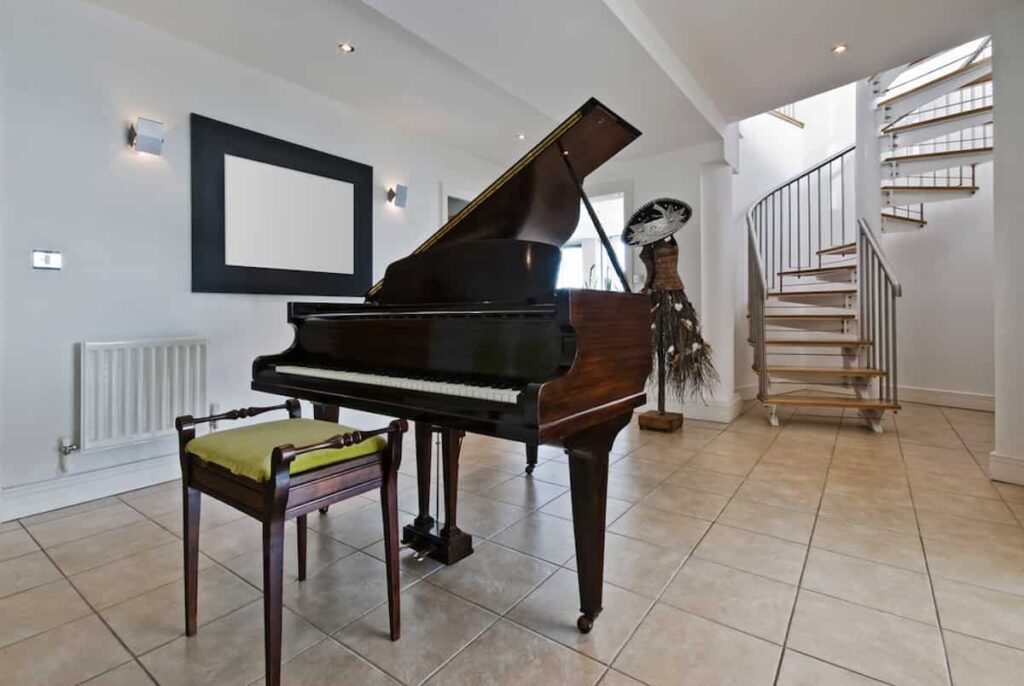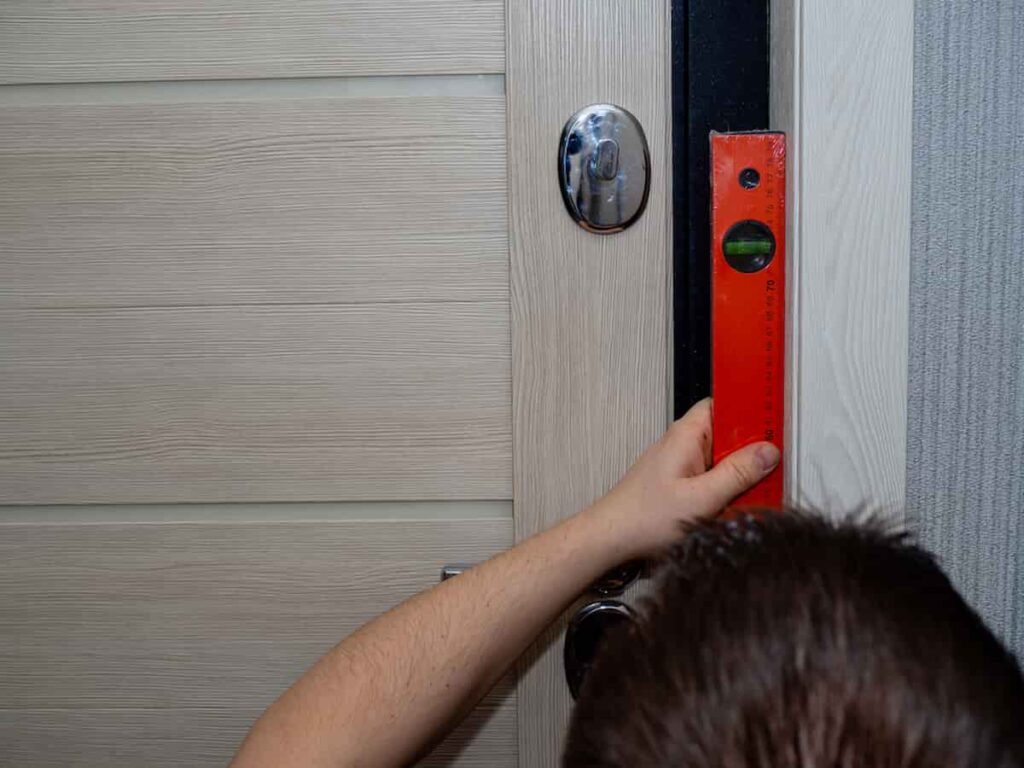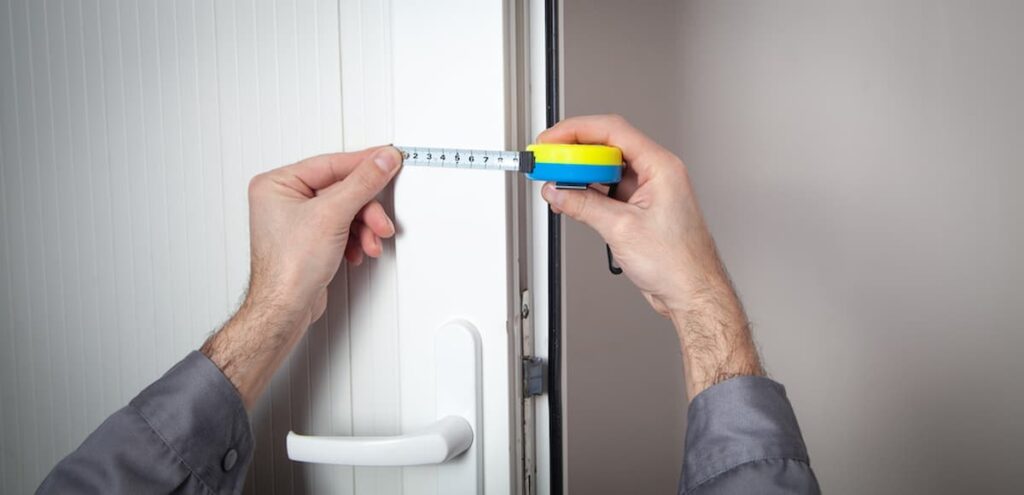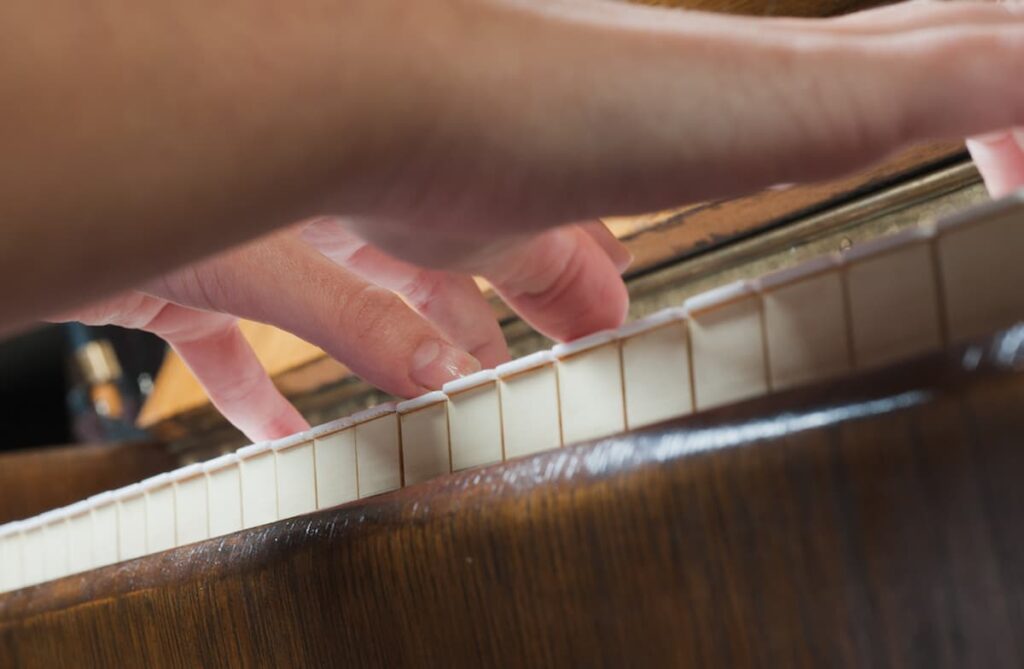As an Amazon Associate I earn from qualifying purchases.
As a piano owner, one of the most common concerns when moving homes or rearranging furniture is whether the piano will fit through the door. It can be a daunting task to move a large and heavy instrument like a piano, and the thought of not being able to get it through the door can be stressful.
However, the good news is that in most cases, upright pianos can fit through a standard doorway without any disassembly required. On the other hand, moving a full-size grand piano may require more effort and planning, as it usually needs to be moved on its side with the legs and lyre removed to fit through doorways.
Before attempting to move a piano, measuring the doorways and hallways is important to ensure that the instrument can fit through them. With proper planning and preparation, moving a piano can be a manageable task, and you can rest assured that your beloved instrument will make it through the door unscathed.
Want to Learn Piano?Click Here

Measuring the Piano and the Doorway
Before moving a piano, measuring both the piano and the doorway is essential to ensure that the piano will fit through the door. Here are the steps I take to measure the piano and the doorway:
- Measure the height, width, and depth of the piano.
- Measure the height, width, and depth of the doorway.
- Measure the diagonal distance from the top corner of the piano to the opposite bottom corner.
- Measure the diagonal distance from the top corner of the doorway to the opposite bottom corner.
Once you have these measurements, you can determine if the piano will fit through the doorway. It is important to note that the diagonal distance is often the most critical measurement, as it accounts for the piano’s depth and height.
If the diagonal distance of the piano is larger than the diagonal distance of the doorway, the piano will not fit through the door. In this case, you may need to consider alternative moving methods, such as removing the legs or disassembling the piano.
It is also important to consider any obstacles to moving the piano, such as stairs, tight corners, or narrow hallways. These obstacles can make it difficult or impossible to move the piano, even if it fits through the doorway.
By taking accurate measurements and considering potential obstacles, you can ensure that your piano move goes smoothly and without any unexpected surprises.

Determining the Doorway Size
This can be split into two types of doorway sizes, the standard and the non standard (which can be large or narrow).
Standard Doorway Sizes
Before you move your piano, it’s important to know the size of the doorway you’ll be moving it through. Most doorways in residential homes are standard sizes, typically measuring 30 to 36 inches in width and 80 to 96 inches in height.
These sizes are generally wide enough to fit a piano, but measuring your piano and the doorway is important to ensure a proper fit.
For example, if you have a baby grand piano, it’s important to measure the width of the piano and compare it to the width of the doorway. If the piano is wider than the doorway, removing the legs or disassembling the piano to fit it through the doorway may be necessary.
It’s important to note that standard doorway sizes can vary depending on the age and location of the home or building. Always measure the doorway to ensure a proper fit for your piano.

Non-Standard Doorway Sizes
If you live in an older or custom-built home, your doorway sizes may not be standard. In this case, it’s important to measure the doorway and compare it to the size of your piano. You may need to remove the legs or disassemble the piano to fit it through the doorway.
If you’re unsure about the size of your doorway, consider hiring a professional moving company. They can assess the size of your doorway and provide guidance on how to move your piano safely and efficiently.
Remember, it’s important to take the time to properly measure your piano and doorway before attempting to move your piano. A little bit of preparation can save you time, money, and potential damage to your piano.
Preparing the Piano for Moving
And now, for the most important part, removing the legs of the piano and wrapping it for protection.
Removing the Legs
Before moving a piano, it’s important to remove the legs. This will make it easier to fit the piano through narrow doorways and hallways. To do this, you’ll need to follow these steps:
- First, remove the lid and pedal lyre from the piano.
- Next, locate the screws that attach the legs to the piano.
- Using a screwdriver, carefully remove the screws and set them aside.
- Gently lift the piano and remove the legs one at a time.
- Be sure to label each leg so you know which one goes where when it’s time to reassemble the piano.
Removing the legs may not be necessary for all piano types. For example, most consoles and uprights can get by leaving the legs on. I haven’t seen many circumstances where the legs of an upright piano go past the width of a door (or at least something you can’t wiggle in diagonally).
Grand pianos are a different story, however, and each leg must be removed first if you’re planning to move it through a standard door.

Wrapping the Piano
If there is one step, you should absolutely, positively not skip; it’s wrapping the piano. This is crucial because it protects the finish of your instrument. Especially as you try to wiggle pianos through hallways and doorways, it’s going to bump the walls. If the finish isn’t covered, that practically guarantees it’ll get a scratch or gash.
Once the legs have been removed, it’s time to wrap the piano to protect it during the move. Here are the steps:
- Start by wrapping the piano in a moving blanket or other protective material.
- Use packing tape to secure the blanket in place.
- Next, wrap the legs in bubble wrap or another protective material.
- Be sure to label each leg so you know which one goes where when it’s time to reassemble the piano.
- Finally, cover the entire piano with a layer of plastic wrap to protect it from scratches and other damage during the move.
By following these steps, you can help ensure that your piano is properly prepared for the move and will arrive at its destination in good condition.
Moving the Piano
Now comes the part where you have options, moving the piano.
Moving the Piano Manually
Moving a piano manually can be daunting, especially if you have never done it before. However, moving an upright piano through a standard doorway is possible without disassembling it. Here are some steps to follow:
- Remove all objects from the area around the piano.
- Close and lock the lid of the piano.
- Wrap the piano in blankets to protect it from scratches and dents.
- Get at least two people to lift the piano and move it through the doorway.
- Make sure to lift with your legs and not your back to avoid injury.
Moving a grand piano manually is a bit more complicated since it requires disassembling some parts of the piano. Here are some steps to follow:
- Remove the lid and pedal lyre of the piano.
- Remove the leg at the straight side of the piano.
- Gently lower the piano to the ground, straight side down.
- Load the piano onto a large furniture dolly.
- Remove the remaining two legs and wrap the piano with thick moving blankets to protect it.
- Move the piano through the doorway with the help of at least two people.
Personally, I wouldn’t move a grand piano on my own or with help. Hire professionals that know how to protect it, have the strength to lift it, and the equipment to get it to its new location safely.
Using Professional Movers
If you have a valuable or delicate piano, it is best to hire professional movers to move it for you. Here are some reasons why:
| Advantages | Disadvantages |
|---|---|
| Professional movers have the experience and equipment to move a piano safely and efficiently. | Professional movers can be expensive. |
| Professional movers are insured, so you are protected in case of damage or loss. | You need to do your research to find a reputable moving company. |
| Professional movers will take care of all the heavy lifting and transport of the piano. | You need to coordinate with the movers to schedule the move. |
When hiring professional movers, make sure to choose a company that specializes in moving pianos. You should also ask for references and check their reviews online to ensure that they have a good reputation. Finally, make sure to get a written estimate of the cost of the move before hiring the movers.
Hello & thanks for stopping by! I’m a professional concert pianist and piano instructor. In the United States, I’ve given successful performances in several places including New York, Florida, Connecticut, & New Jersey, I have also performed internationally in Italy and made my Carnegie Hall debut in 2014. I enjoy blogging about the piano, the art of performance, general music, current events and the latest in music production.
